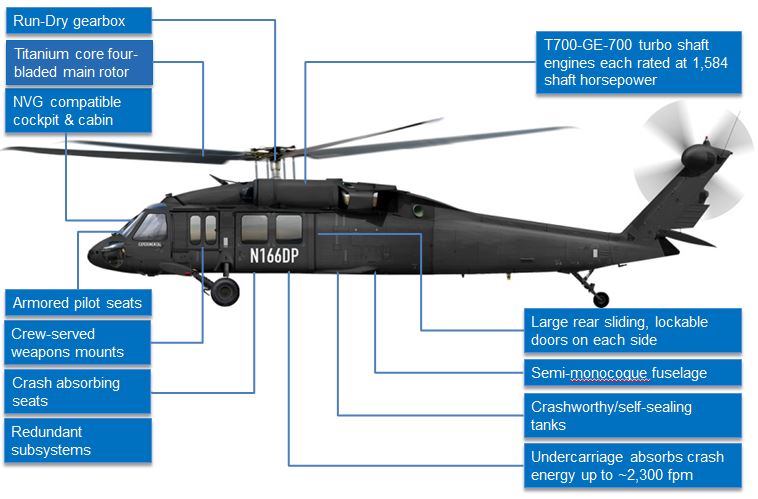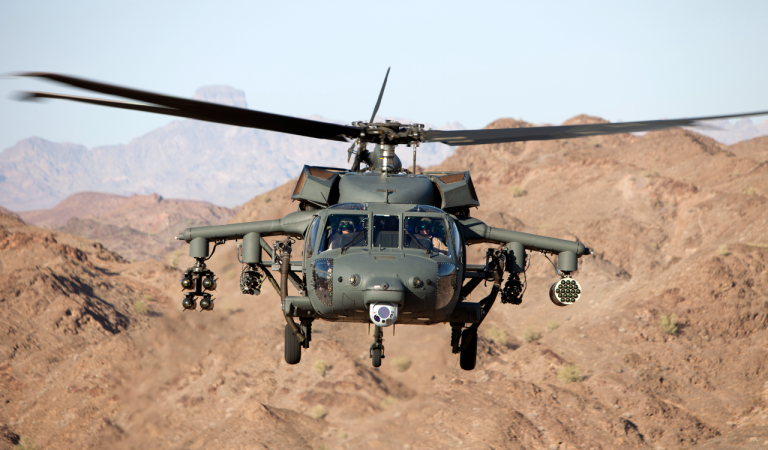The Future of the UH 60: Innovations and Upgrades for Boosted Performance
The Future of the UH 60: Innovations and Upgrades for Boosted Performance
Blog Article
UH-60: Advancements in Modern Helicopter Style
The UH-60 helicopter stands as a benchmark in contemporary air travel, showcasing significant improvements in design and technology that provide to the evolving needs of army operations. As we check out the development and essential innovations of the UH-60, it ends up being important to take into consideration how these growths affect not only current applications but also the future landscape of helicopter layout.

Evolution of the UH-60
The advancement of the UH-60 Black Hawk helicopter represents a considerable turning point in aerospace design and armed forces aviation. Presented in the late 1970s, the UH-60 was made by Sikorsky Aircraft to satisfy the USA Army's requirement for a functional utility helicopter efficient in doing a range of objectives. Its style emphasized maneuverability, toughness, and speed, setting new standards for functional performance.
The UH-60 includes a distinctive four-blade blades system, which enhances lift and security, permitting it to run effectively in diverse environments. Its airframe is constructed from advanced composite products, adding to a decrease in weight while keeping structural stability. The helicopter's style additionally includes enhanced the rules of aerodynamics, which boosts fuel performance and raises variety.
For many years, the Black Hawk has actually undergone numerous upgrades to improve its capabilities, consisting of boosted engines, progressed trip control systems, and modular systems for simple upkeep and adaptability. The helicopter's capacity to perform missions ranging from army transportation to medical emptying has solidified its role as a foundation of U.S. armed forces procedures. The UH-60 Black Hawk remains an archetype of just how development in helicopter design can dramatically impact military efficiency and operational adaptability.
Advanced Avionics Systems
Innovations in avionics systems have changed the capacities of contemporary helicopters like the UH-60 Black Hawk, enhancing operational efficiency and situational recognition (UH 60). The integration of innovative avionics enables enhanced interaction, flight, and navigation management, making the UH-60 much more versatile in varied objective profiles
Among the essential attributes is the advanced digital cockpit, which utilizes multifunction screens that give real-time data, guaranteeing pilots have instant accessibility to vital flight information. This streamlining of info minimizes pilot workload and enhances decision-making procedures throughout complicated operations. Additionally, the unification of general practitioner and inertial navigating systems makes it possible for exact positioning and path planning, improving objective execution in difficult atmospheres.
Additionally, progressed avionics systems enhance interaction capacities through safe and secure data links and voice interaction systems, allowing smooth sychronisation with ground forces and other aircraft. The integration of automated trip control systems better adds to boosted stability and control, especially in unfavorable weather conditions or during low-altitude maneuvers.
Engine and Efficiency Enhancements
Engine performance in modern helicopters has taken a significant leap forward, driven by advancements that enhance power, integrity, and performance. The UH-60 Black Hawk, for circumstances, uses the T700-GE-701C engine, which features a dual-channel, full-authority digital engine control system.
Moreover, the combination of engine wellness monitoring systems allows for real-time diagnostics and anticipating upkeep, significantly boosting functional dependability. These systems not just sharp teams to potential issues before they become essential but also assist in extra effective maintenance organizing, consequently decreasing downtime.

Products and Structural Innovations
Recent developments in materials and architectural layout have changed modern helicopter building and construction, improving both efficiency and durability. The intro of sophisticated composite materials, such as carbon fiber strengthened polymers, has actually considerably reduced weight while preserving structural honesty. continue reading this This change not just enhances fuel performance yet also boosts haul capability, allowing helicopters like the UH-60 to carry out even more varied missions.
In addition, technologies in light weight aluminum alloys and titanium parts have actually added to enhanced resistance to deterioration and exhaustion, prolonging the life-span of crucial airframe components. The tactical use these materials has actually caused a decrease in upkeep requirements and boosted overall functional preparedness.

Additionally, the combination of computer-aided layout (CAD) and additive manufacturing modern technologies has made it possible for a lot more lightweight frameworks and intricate geometries, enhancing the wind resistant efficiency of helicopter layouts. These improvements help with fast prototyping and production, Learn More Here enabling makers to respond swiftly to evolving goal needs.
Security and Survivability Functions
Safety and security and survivability features in modern helicopter style have ended up being extremely important, reflecting the boosting needs for goal performance in challenging environments. The UH-60 Black Hawk, a noteworthy instance, integrates innovative innovations to improve team and passenger security. Among one of the most crucial developments is the consolidation of crashworthy gas systems made to reduce the risk of fire throughout influence. Additionally, the airframe is created with enhanced products that dissipate and soak up power, more shielding occupants in case of a collision.
The helicopter additionally utilizes a ballistic protection system, that includes armored staff seats and crucial systems securing, minimizing susceptability to tiny arms fire and shrapnel. Boosted situational recognition is achieved through sophisticated avionics and sensing unit technologies, allowing pilots to detect and stay clear of risks properly.
Additionally, the combination of redundancy in important systems-- such as twin engines and several flight control channels-- makes sure continued procedure even if one system stops working. The UH-60 is equipped with advanced emergency flotation protection devices, boosting survivability in water landings. Jointly, these functions not only improve the safety and security of employees yet additionally boost objective success prices in hostile environments, demonstrating the commitment to excellence in helicopter style.
Conclusion
The UH-60 helicopter represents a significant improvement in contemporary aviation technology, integrating cutting-edge materials, innovative avionics, and durable safety and security attributes. Overall, the UH-60 serves as a criteria for future advancements in helicopter style, personifying durability and convenience in modern military operations.
The UH-60 helicopter stands as a criteria in contemporary aviation, showcasing significant improvements in design and modern technology that cater to the advancing demands of armed forces procedures. As we explore the find advancement and key technologies of the UH-60, it comes to be necessary to consider how these growths affect not only existing applications however likewise the future landscape of helicopter design.
Presented in the late 1970s, the UH-60 was developed by Sikorsky Airplane to satisfy the United States Army's requirement for a functional energy helicopter capable of executing a variety of missions. The UH-60 Black Hawk remains a prime instance of just how technology in helicopter design can considerably influence army efficiency and functional adaptability.
On the whole, the UH-60 serves as a benchmark for future growths in helicopter design, personifying durability and flexibility in contemporary army operations.
Report this page